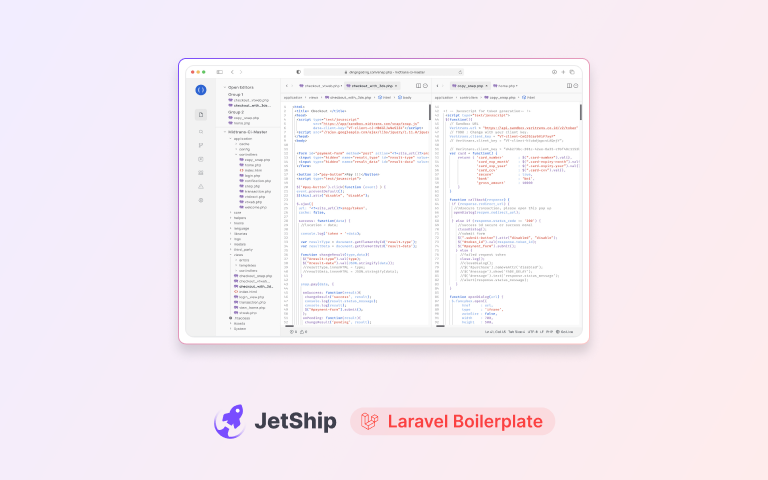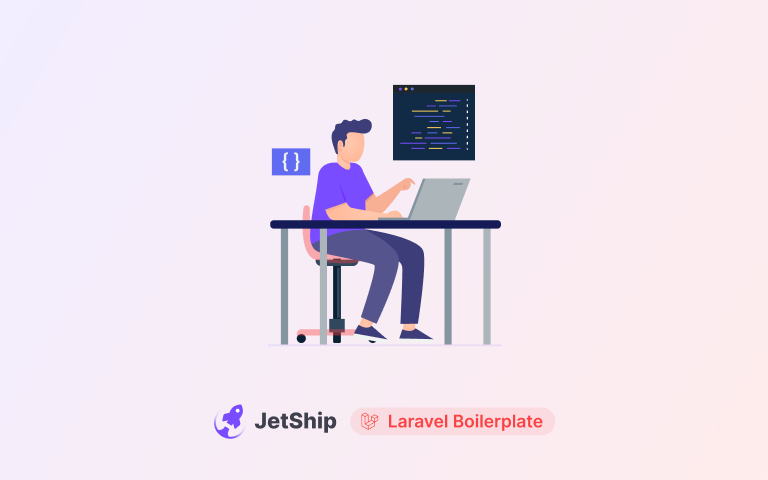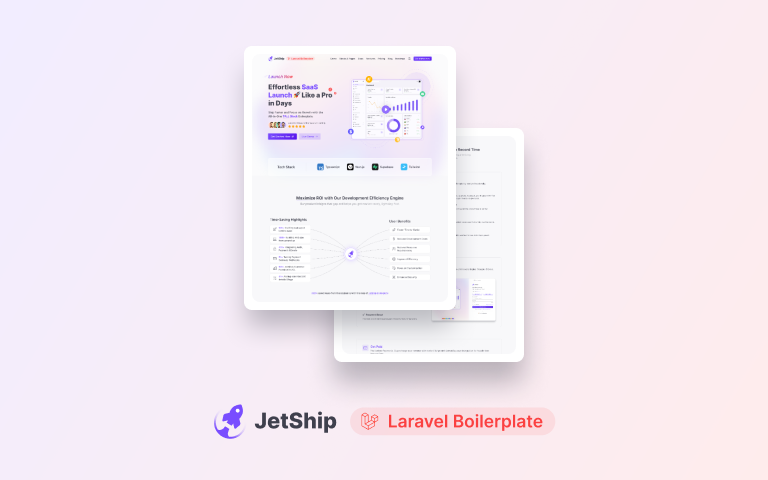Launching a new Laravel-based product can be challenging, especially if you're aiming for a fast, efficient, and successful release. To ensure a smooth launch, it's crucial to leverage tools and libraries that work seamlessly with Laravel. Our product, JetShip, a comprehensive Laravel starter kit, is designed to make the development and launch process faster and easier.
In this checklist, we'll explore essential tools and resources that will help you launch your product quickly using JetShip, ensuring you cover all the critical steps for a successful debut.
1. Define Your Product Goals and Strategy
Start by clearly defining your product goals and developing a strategy to achieve them:
Clarify the Product Vision: Understand the specific problem your Laravel product solves and who it benefits.
Set Measurable Objectives: Define KPIs like user acquisition rates, revenue targets, and conversion rates.
Create a Development Roadmap: Outline key milestones and deadlines using project management tools.
Tools to Use:
JetShip: Utilize pre-built components to align your development with product goals from day one.
Trello or Asana: Manage tasks, set milestones, and collaborate with your team.
2. Conduct Thorough Market Research and Competitive Analysis
To ensure your product fits the market, conduct in-depth research to understand customer needs and your competition:
Analyze Market Demand: Use tools like Google Trends to gauge interest in your product niche.
Identify Competitor Offerings: Review competitor Laravel products to understand their strengths and weaknesses.
Tools to Use:
Ahrefs or SEMrush: Perform keyword research and analyze competitors' SEO strategies.
Hotjar: Gain insights into user behavior through heatmaps and session recordings.
3. Develop a Robust Marketing Plan with Laravel Integration
A strong marketing plan helps in effectively reaching your target audience:
Content Marketing:
Create educational blog posts or tutorials that highlight your product's unique Laravel features.
Use JetShip's built-in blog components to manage content easily.
Email Marketing:
Use Laravel Mailcoach to handle email campaigns, manage subscribers, and automate follow-ups directly within your Laravel application.
Social Media Strategy:
Leverage tools like Buffer or Hootsuite to schedule and track social media posts.
Create engaging content with Canva and share it across social platforms to build anticipation.
4. Build a High-Converting Landing Page Using Laravel
A compelling landing page is essential for converting visitors into customers:
Leverage JetShip's Pre-Built Components:
Use JetShip's ready-to-use components to build a responsive and conversion-focused landing page quickly.
Integrate features like dynamic forms, testimonials, and CTA buttons to boost engagement.
Optimize for Performance and SEO:
Use Spatie Laravel SEO to optimize meta tags, descriptions, and content for search engines.
Implement Laravel Cache and Redis for caching to ensure fast load times.
5. Prepare Your Technical Infrastructure and Development Environment
Ensure that your technical setup is optimized for Laravel development:
Use JetShip's Tech Stack:
Built on the TALL stack (TailwindCSS, AlpineJS, Laravel, and Livewire), JetShip provides a powerful, scalable, and developer-friendly environment.
Utilize Laravel Mix for asset compilation and versioning to streamline your front-end development.
Automate Deployments:
Use Laravel Forge for server management and Laravel Envoyer for zero-downtime deployment.
Set up GitHub Actions for CI/CD pipelines to automate testing and deployment.
6. Set Up Laravel-Compatible Hosting and Domain Providers
Choosing the right hosting and domain provider is key to ensuring your Laravel product performs optimally:
Managed Laravel Hosting:
Forge: Leverage Laravel's own server management tool for seamless deployment and management.
Vapor: Use this serverless deployment platform for Laravel to auto-scale your application.
Domain and CDN Management:
Register domains with Namecheap or GoDaddy.
Use Cloudflare for DNS management, security, and caching.
7. Execute Pre-Launch Activities to Build Buzz
Pre-launch activities help generate interest and anticipation for your product:
Grow Your Email List:
Use Laravel Mailcoach to build and manage an email list of potential customers.
Create lead magnets and early access offers to incentivize sign-ups.
Engage with the Laravel Community:
Publish guest posts on popular Laravel blogs.
Participate in Laravel community forums, Slack channels, and social media groups to increase visibility.
Leverage Influencer Marketing:
Identify Laravel influencers and developers on platforms like Twitter and GitHub.
Use tools like Upfluence or AspireIQ to connect with relevant influencers.
8. Thoroughly Test Your Laravel Application
Before the big day, make sure to test all aspects of your Laravel product:
Automated Testing:
Use Laravel Dusk for end-to-end testing of your application's user interface.
Implement PHPUnit for automated unit testing to catch bugs early in the development cycle.
Performance Testing:
Use Blackfire or Laravel Debugbar to profile and optimize your Laravel application.
Run load tests with Apache JMeter to simulate high-traffic scenarios.
Security Testing:
Utilize Laravel Security Checker to detect vulnerabilities in your dependencies.
Implement Laravel Sanctum or Laravel Passport for secure API authentication.
9. Execute Your Laravel Launch Day Strategy
Ensure everything is set for a seamless launch:
Announce Your Launch: Use Laravel Mailcoach for coordinated email campaigns and social media announcements.
Monitor Performance in Real-Time: Use Laravel Telescope to track application performance and debug issues.
Engage with Your Audience: Implement Intercom or LiveChat for real-time support and customer engagement.
10. Post-Launch Activities for Ongoing Success
After your Laravel product is live, focus on continuous improvement:
Collect User Feedback:
Use Typeform integrated with your Laravel backend to gather customer feedback and suggestions.
Analyze Performance Data:
Leverage Google Analytics alongside Laravel Analytics by Spatie to monitor key performance metrics.
Utilize Hotjar for additional insights into user behavior.
Plan for Future Updates:
Use GitHub Issues integrated with your Laravel project to track bugs, feature requests, and future enhancements.
Why Choose JetShip for Your Laravel Product Launch?
If you're developing a product with Laravel, JetShip provides the perfect foundation for a quick and successful launch:
Pre-Built Laravel Components: Save time with ready-made components and templates that are optimized for Laravel.
Optimized for SaaS Development: Built with the TALL stack, JetShip ensures your product is scalable, secure, and high-performing.
One-Click Deployment: Easily deploy your Laravel product using JetShip's deployment tools, minimizing downtime and complications.
Integrated Caching and Security: JetShip comes with built-in caching strategies and security features to keep your application fast and secure.
JetShip simplifies the Laravel development process, allowing you to focus on creating a product that stands out in the market.
Conclusion
Launching a Laravel product involves a lot of preparation, but using the right tools and libraries can make the process much smoother and more efficient. By following this Laravel-specific product launch checklist and leveraging the power of JetShip, you can ensure a seamless launch and set the stage for long-term success.



